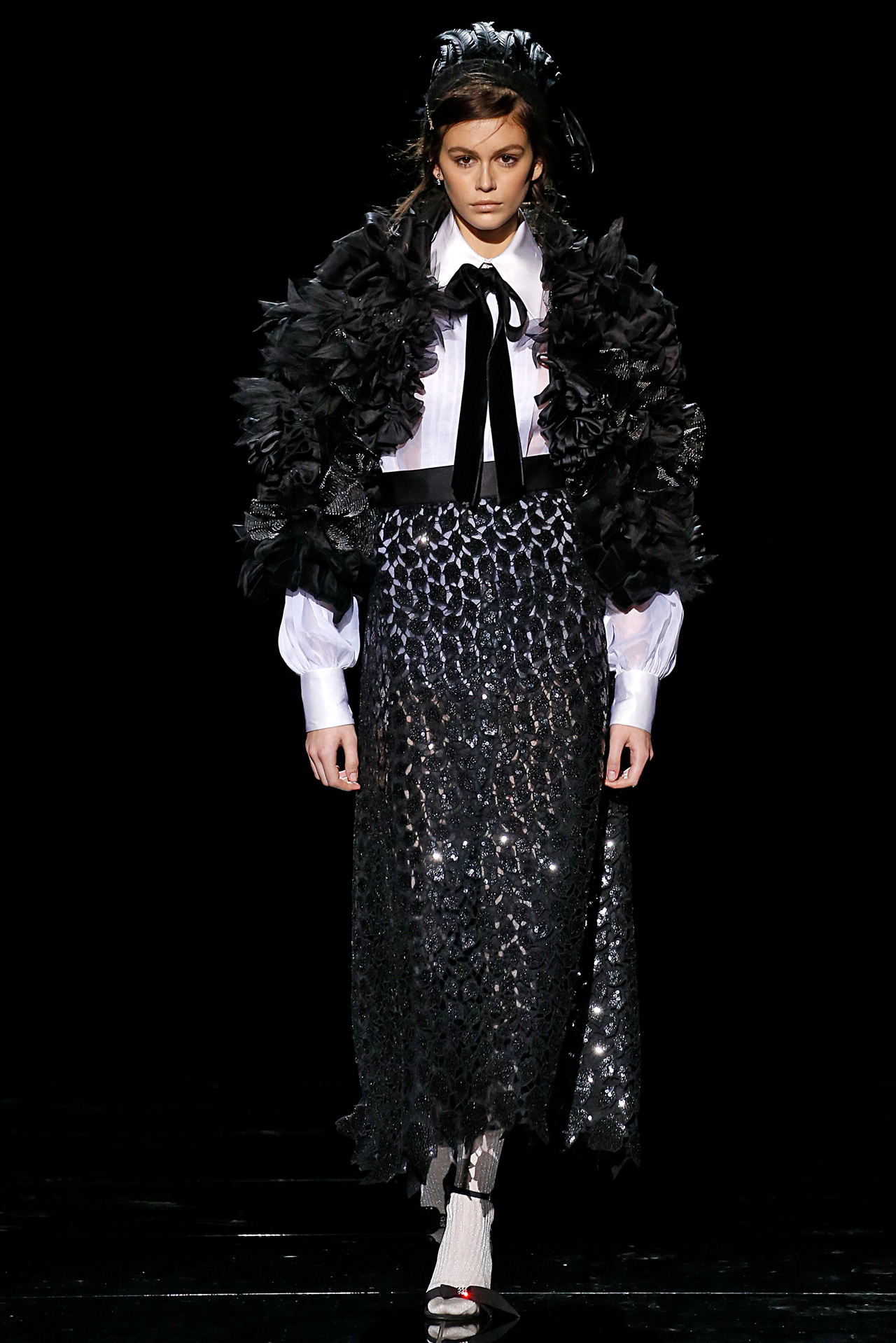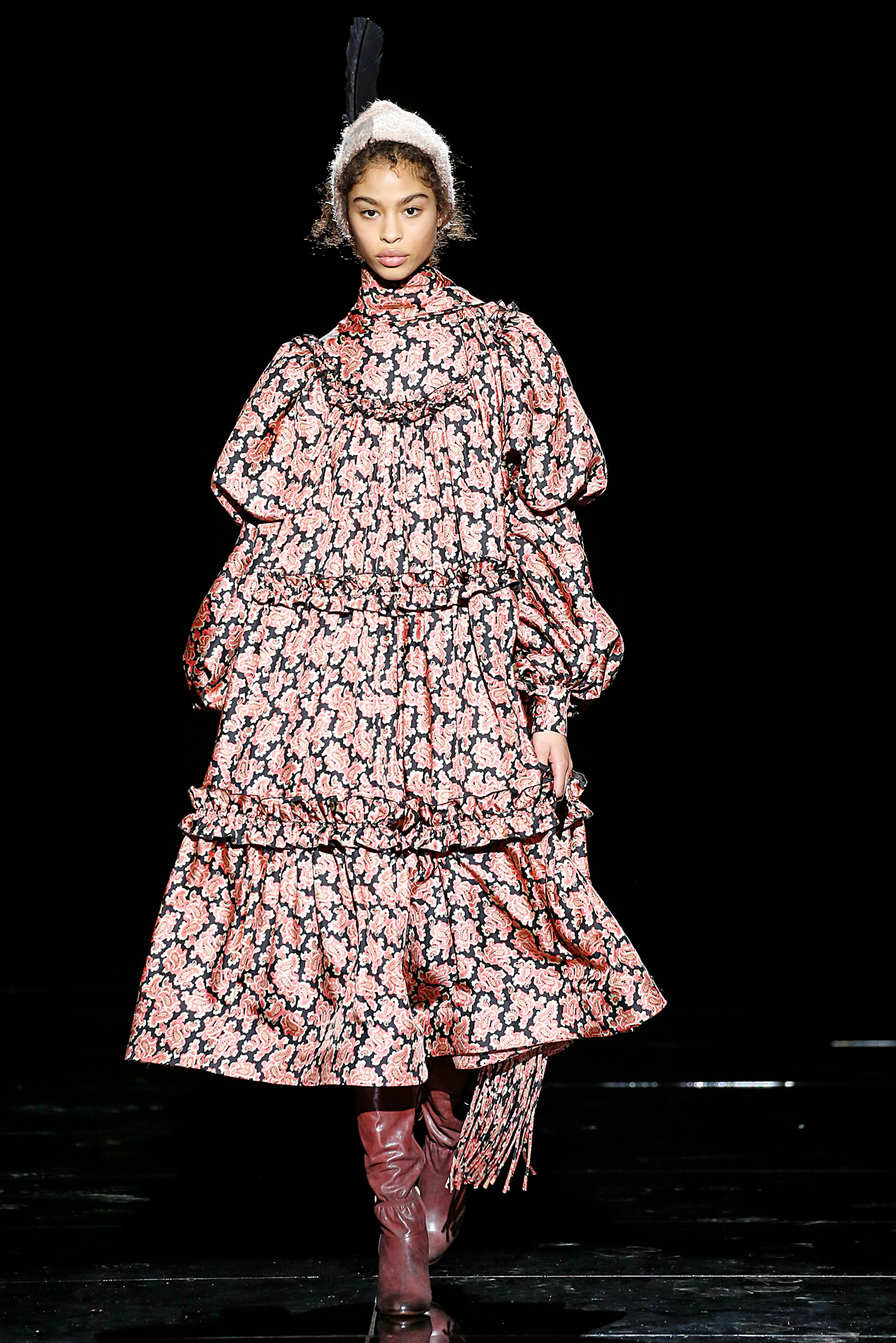News feed

Any era of revolution begins with hardship. Times when all that’s left is the bones of the before to forge into the future. There was something tide-turning about today’s autumn winter ’19 show from Marc Jacobs. A collection that bore the impression of melancholy couture, yet also of a delicate, definitive individualism. “She is a fallen angel, but she is still an angel” said Jacobs in response. An image of the woman for whom he is conjuring, or a piece of existential introspection?
It was only two years ago that Bernard Arnault (chief executive of LVMH – the parent company who owns a major stake in Marc Jacobs) lamented that he was “more concerned about Marc Jacobs than the US president”. And likely, Jacobs himself was just as concerned. He had been quoted as saying he felt increasingly out of touch with what customers want these days. A depressing notion from the darling of New York, the man who was renowned for sparking the original joy in fashion. The devil-may-care designer who took risks like they were sugar pills and delivered wild collections with reckless energy. During the 90s and into the 00s his zeitgeist was undeniable. Regularly, the word “It” was fastened to the names of his latest creations. But in seasons post 2014 (the same year he left his tenure as creative director at Louis Vuitton), something changed. Critics began dropping stars from their reviews, reluctantly agreeing that current collections were feeling disconnected and disenchanted. Rumours of erratic behaviour, personally and professionally, swirled. The “old” Marc was disappearing.
But then, that’s the thing about falling from grace. While the fall might be turbulent, the landing is inevitable. One has no choice but to relish in re-evaluation. Or, in the case of fashion, downsize and get back to basics. For Marc Jacobs, and for LVMH at least, saving this label meant stripping it right back. Rumours of mass downturn (one report from last year estimated the label was losing over US$61million annually) meant closed stores, folded diffusion labels, staff overhauls and a closed menswear sector. Marc Jacobs is now as small as it has ever been. But from this pruning, some small blooms. LVMH has stated that they’re already impressed with Jacobs’ turnaround. As we’ve seen with many before, any label can be revitalised with the right direction.


In a sequel of sorts to his show this time last year (which one critic likened to a funeral) Jacobs once again presented his autumn winter collection via an ominously dimmed runway at the Park Avenue Armoury. Last year, copious volume was his flavour, but despite is originality, its result was more disturbing than chic. The mega coats with comically wide shoulders were more David Lynch than Sofia Coppola. Today, volume played again but this time with a viable sense of belonging. Oversized trapeze dresses with dramatized frilly collars created a silhouette suitable for the current conservative micro-trend (labels like Batsheva have been creating traditional prairie dresses with cult-like success). Larger coats in tweeds exaggerated models’ frames (who included Gigi Hadid, Kaia Gerber and Aduk Akech) while drastic winter capes continued the theatrical overtones. Civil War America seemed an inspiration by era, what with all the ruffling, the ballooned sleeves and the pointy beanies playing into somewhat of a bonnet figure. Yet it was texture, in its grand uniqueness, that played muse to Jacobs’ theme of remarkable individuality. Be it the hoards of organza petals or the sheened, glittering herringbones or the excessive layers of bower-type feathers, there was no storyline by way of fabrication, each garment, each look was designed to be as unique as the woman wearing it. When the models took the runway in a cascading finale, it viewed as an exhibition of considered couture, not a collection of fleeting ready-to-wear.

As the Marc Jacobs show rounded out New York Fashion Week today, news quickly spread of its unparalleled mic-drop. Christy Turlington had returned to the runway for the first time in 20 years. Donning a feathered black gown contrasted by a stripped-back, make-up-less face, the supermodel elevated the finale to an appropriate level of resolution. That out of the darkness, a new era was emerging. It was a feeling of familiarity. Of irrevocable support. Of a homecoming. And what a beautifully fitting tribute.










